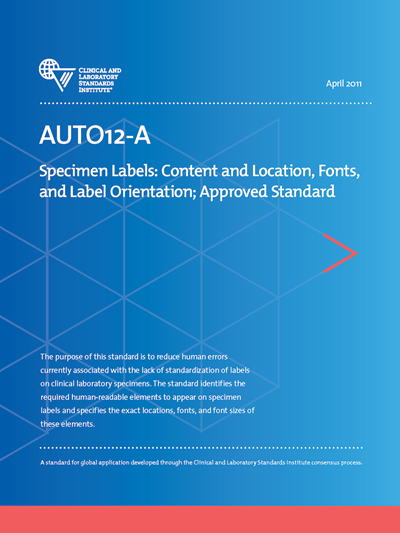CLSI AUTO12
Specimen Labels: Content and Location, Fonts, and Label Orientation, 1st Edition
The purpose of this standard is to reduce human errors currently associated with the lack of standardization of labels on clinical laboratory specimens. The standard identifies the required human-readable elements to appear on specimen labels and specifies the exact locations, fonts, and font sizes of these elements.
This document is available in electronic format only.
This reaffirmed document has been reviewed and confirmed as suitable to remain published without revision to content, as of January 2018. The document’s next scheduled review is generally five years after the reaffirmation date.
Member price:
List Price:Details
Chairholder: Charles D. Hawker, PhD, MBA, FACB
Date of Publication: April 28, 2011
Order Code PDF: CLSI AUTO12AE
ISBN Number: 1-56238-748-0
Order Code Print: print not available
Edition: First
Pages: 52
CLSI AUTO12 Additional Details
If interested in ordering larger quantities of this document in print, please contact us here.
The U.S. Food and Drug Administration (FDA) has evaluated and recognized this approved-level consensus standard for use in satisfying a regulatory requirement.

